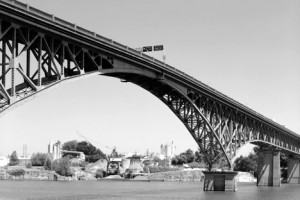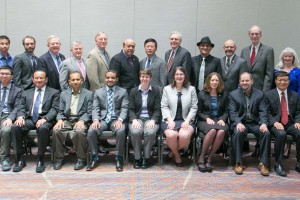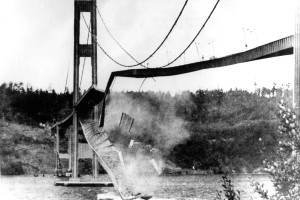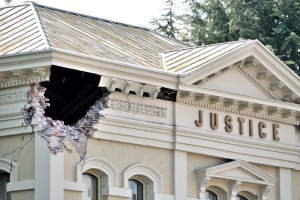Gustav Lindenthal, a leading proponent of continuous bridges, finished his Sciotoville Bridge (STRUCTURE, May 2017) in August 1917. In late 1922, a call went out to the largest and best-known engineers of the country to design three bridges (the Burnside, Ross Island, and Sellwood) across the Willamette River in Portland, Oregon. A group consisting of Ira Hedrick and Robert Kremers (Kremers was the local connection and had previously worked as an Engineer for the City) was awarded the contract to design the three bridges. …
Review Category : Articles
Structural Engineering Engagement and Equity (SE3) Committee Survey Results
In Part 1 of this series (STRUCTURE, April 2017), the results of the 2016 SE3 Study focused on overall career satisfaction, development, and advancement. This article highlights survey findings regarding compensation, overtime, and the gender pay gap. A full report that includes findings on work-life balance, flexibility benefits, and caregiving can be found at SE3project.org/full-report. …
Confirming Your Intentions and the Interpretation by Others
There are three aspects of field Quality Assurance for construction projects: Inspection by the Building Official, Special Inspection by the owner’s special inspection agency, and Structural Observation performed by the Engineer of Record (EOR) or his/her designee. All three of these functions are important and non-redundant. As the scale and complexity of a project increases, the more important it becomes that all three functions are provided. …
The NCSEA Structural Licensure Committee, like many of us, occasionally “takes stock” to reflect and make resolutions for the future. Over the past few years, the Committee has advocated for structural licensure in various ways: articles, newsletters, member surveys, presentations, and communication with other organizations. Though structural licensure has yet to be established in many jurisdictions, NCSEA continues to believe its implementation would offer better protection to the public and ultimately save lives. …
Consent to Assignment for engineers, also referred to as an Acknowledgement and Consent or a “will-serve letter,” is usually drafted by the bank providing construction financing for a project. A typical consent requires the engineer to agree that the bank can exercise the rights it has acquired through an assignment from the owner; among these rights will be the right to assume the design agreement if the owner defaults on the construction loan. …
Indemnification clauses are the number one source of problems in contracts for professional services. Structural engineers are frequently presented with very one-sided contracts drafted by their Client’s attorney, who may not understand contracting for design professional services or merely wishes to maximize the contractual benefits for the Client. These contracts may contain an indemnification clause like this (real) one: …
The Structural Engineering Institute (SEI) is proud to congratulate the winners of the 2017 ASCE Structural and SEI Awards: …
For centuries, engineers have come up with great new ideas and leveraged them to build stronger, better, lighter, longer, taller, and more beautiful bridges.
Throughout history, some design and procedural innovations have gone wrong, leading to serious structural problems, failures, collapses, and even deaths. Many bridges that seemed like great ideas on the drawing board and in the planning process failed during construction or soon thereafter. This article examines engineering and design concepts, and construction procedures, that led to these problems. …
Develop a Risk Management Plan
Structural engineers are a weird bunch. The vast majority of them are comfortable determining the forces and moments on an indeterminate structure. This, by the very definition of “indeterminate,” shouldn’t be possible. And yet, structural engineers find a way to do it. …
2014 South Napa Earthquake Retrospective
Almost three years have passed since the 2014 magnitude-6.0 South Napa earthquake. The event was the largest in the San Francisco Bay Area since the 1989 Loma Prieta earthquake. Ground shaking was significant with accompanying maximum Modified Mercalli Intensities between VIII and IX. Following the quake, many historical unreinforced masonry (URM) buildings in the Napa downtown area sustained damage. Some of these buildings are now restored or are currently undergoing restoration efforts. Others are still awaiting restoration or are in limbo. …










